Hyundai Tucson: ESC Bleeding of Brake System
Hyundai Tucson - Fourth generation (NX4) - (2020-2023) - Workshop Manual / Brake System / General Information / ESC Bleeding of Brake System
This procedure should be followed to ensure adequate bleeding of air and filling of the ESC unit, brake lines and master cylinder with brake fluid.
- Connect the brake fluid filler to the reservoir tank.
WARNING
- Do not reuse the drained fluid.
- Always use genuine DOT4 brake Fluid.
Using a non-genuine DOT4 brake fluid can cause corrosion and decrease the life of the system.
- Make sure no dirt or other foreign matter is allowed to contaminate the brake fluid.
- Do not spill brake fluid on the vehicle, it may damage the paint; if brake fluid does contact the paint, wash it off immediately with water.
- The reservoir on the master cylinder must be at the MAX (upper) level mark at the start of bleeding procedure and checked after bleeding each brake caliper. Add fluid as required.
- Connect the self-diagnosis to the data link connector located underneath the dash panel.
- Connect a clear plastic mbe to the wheel cylinder bleeder plug and insert the other end of the mbe into a half filled clear plastic bottle.
- Connect the self-diagnosis S to the data link connector located underneath the dash panel.
- Select the "HCU Air Bleeding Mode".
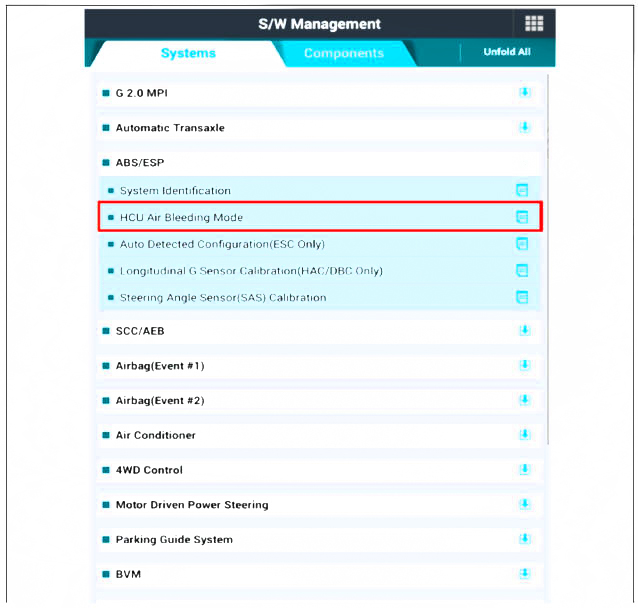

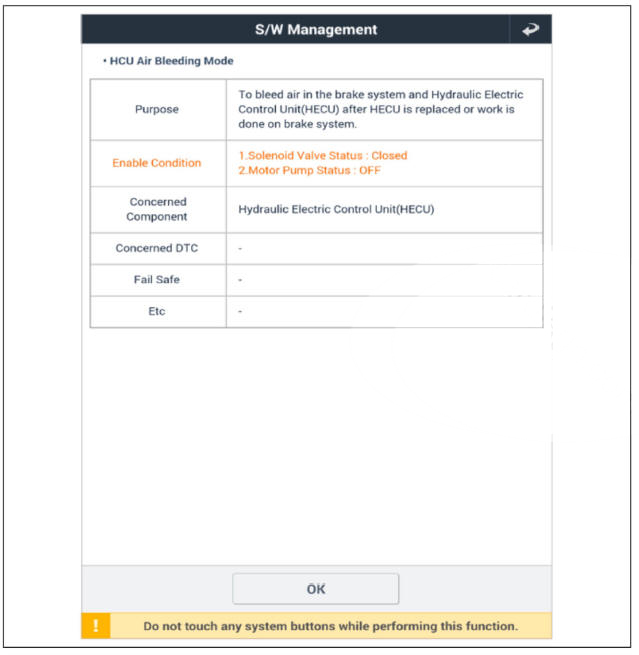
- When HCU is operated forcibly, keep the wheel bleeder screw (A) with opened state.
Front
Tightening torque : 6.8 - 12.7 N.m (0.7 - 1.3 kgf.m, 5.0 - 9.4 lb-ft)
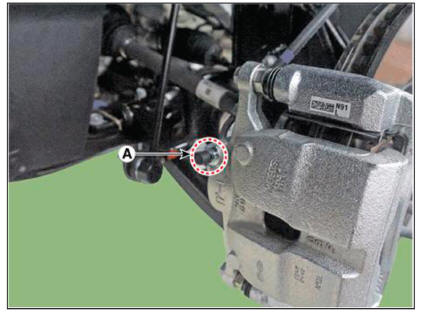
Rear
Tightening torque : 6.8 - 12.7 N.m (0.7 - 1.3 kgf.m, 5.0 - 9.4 lb-ft)
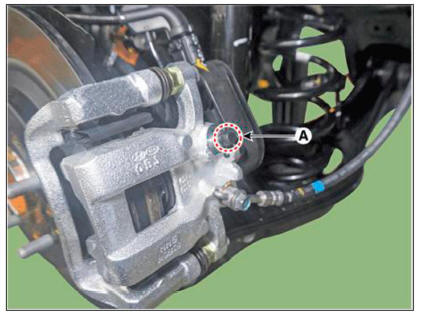
WARNING
The bleed screw opens and closes only a quarter of a turn.
- Depress the brake pedal with strong force at regular intervals while HCU is operated forcibly.
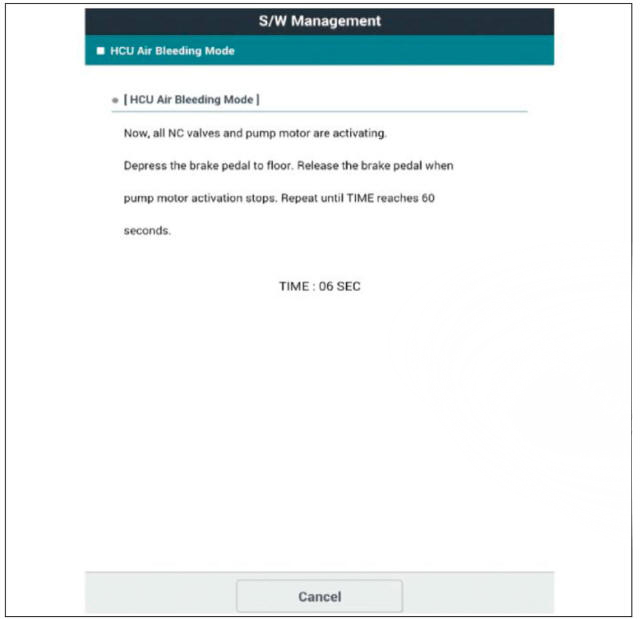
- Repeat the above procedure until the air bubbles are completely removed.
- When HCU forced operation is completed, send the "work end" signal.
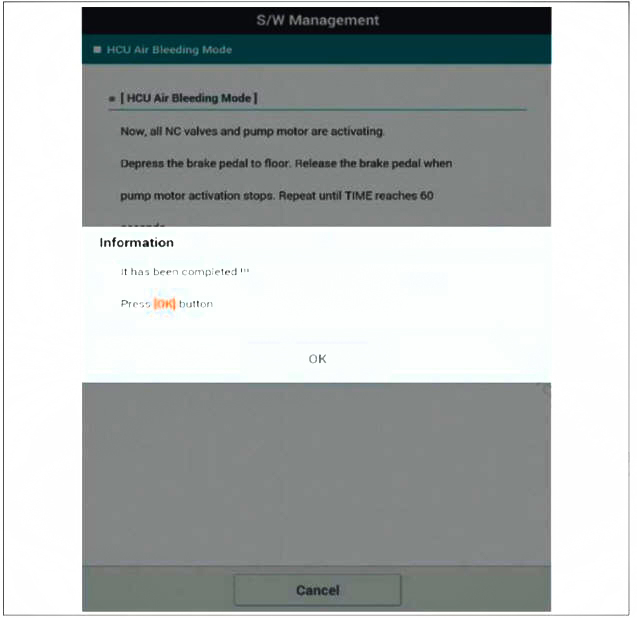
- Close the wheel bleeder screw.
- Work in the order shown in the figure below.
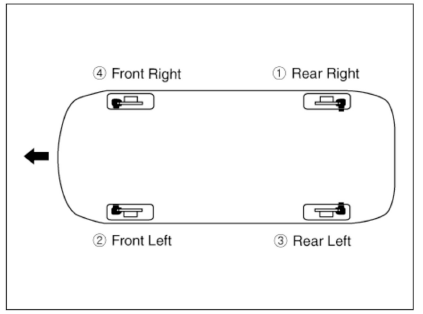
- Refill the master cylinder reservoir to MAX (upper) level line.
READ NEXT:
 Operation and Leakage Check
Operation and Leakage Check
Inspection
Brake Booster (A)
(1) Check brake operation by applying the brakes during a test drive. If the
brakes do not work properly, check the brake
booster. Replace the brake booster as an assembly if it does not work properly
or i
 Brake Booster Operating
Brake Booster Operating
Components
Reservoir cap
Reservoir
Brake booster
Master cylinder
Push rod
Test
Run the engine for one or two minutes, and then stop it. If the pedal
depresses fully the first time but
gradually becomes higher when depressed
SEE MORE:
 Camshaft - Description
Camshaft - Description
CVVD (Continuous Variable Valve Duration) System is a device to control the
optimum open and close timing according to
the driving mode by changing the valve opening section.
It is composed of cam shaft, CVVD assembly, and CVVD acatuator.
Th
 Panorama Sunroof - Removal
Panorama Sunroof - Removal
Remove the roof trim.
(Refer to Roof Trim - "Roof Trim Assembly")
Open the roller blind using the panorama sunroof switch.
WARNING
Leave 10 - 20cm (0.3937 - 0.7874 in) of the roller blind unopened.
Remove the roller blind
Information
- Home
- Hyundai Tucson - Fourth generation (NX4) - (2020-2023) - Owner's Manual
- Hyundai Tucson - Fourth generation (NX4) - (2020-2023) - Workshop Manual